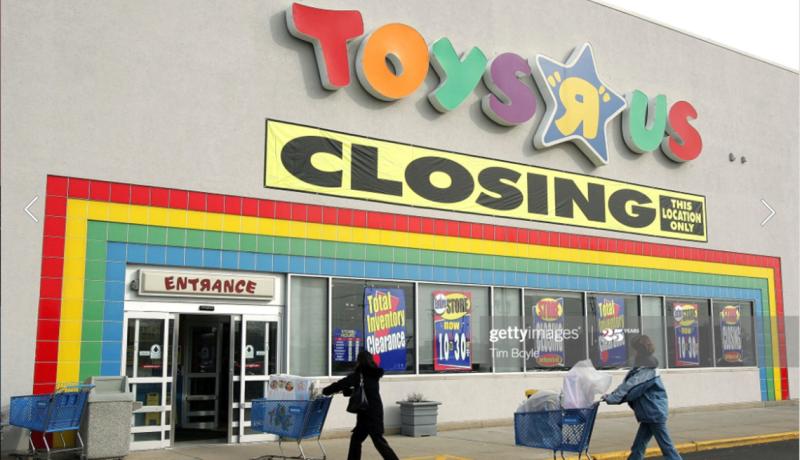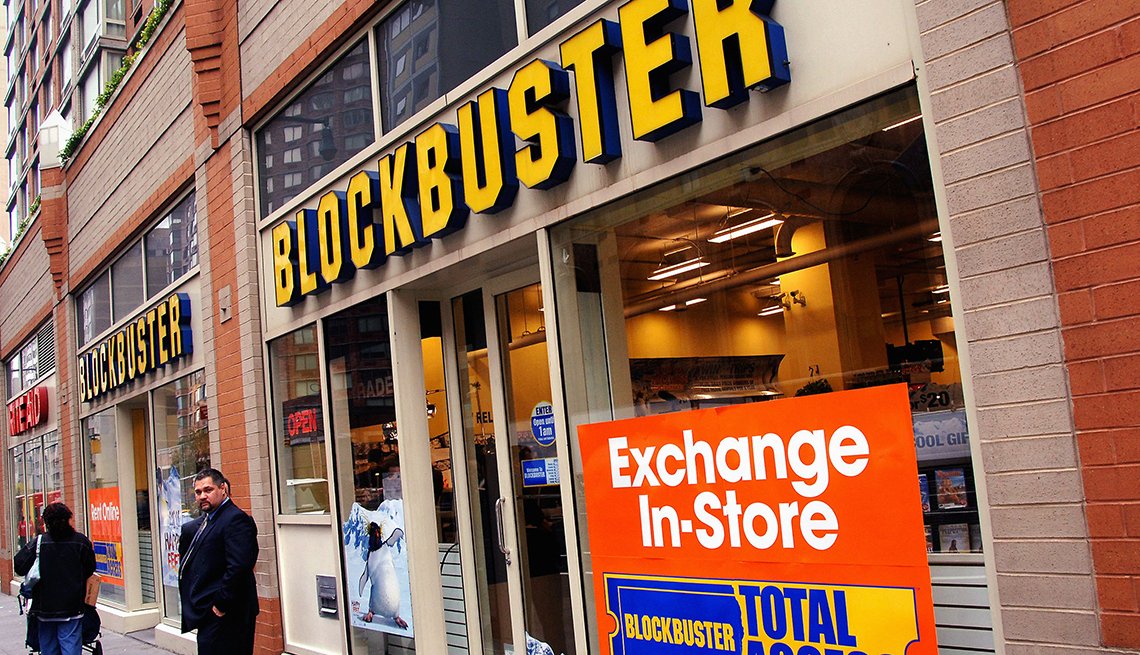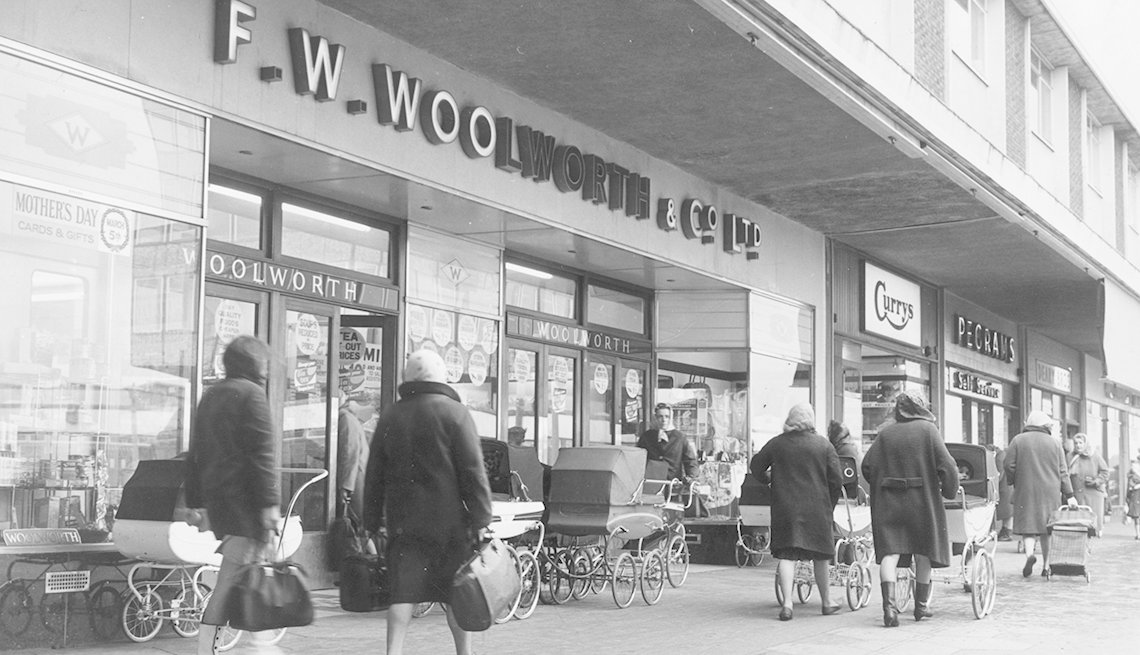Whatever Happened to These Iconic Stores?
By: Stacy Rapacon (AARP)



The global pandemic is taking a toll on retailers. As many Americans sheltered in place, retail sales plunged a record 16.4 percent in April, according to the U.S. Census Bureau. That came on the heels of an 8.7 percent drop in March. And in May, J. Crew became the first big name to file for bankruptcy protection amid the current coronavirus outbreak. Neiman Marcus and J.C. Penney soon followed suit.
Of course, retailers' troubles started long before COVID-19 concerns began to pile on. Indeed, in 2019, more than 9,500 stores closed, according to Coresight Research. That was 60 percent more than the year before and continues a years-long trend of closures as businesses were rethinking their brick-and-mortar presence and adjusting to the ubiquity of online shopping.
But the pandemic is now really pushing the point home. "The effect of the pandemic is to accelerate the demise of retailers that had lost their way and that people no longer had a reason to [visit]," said Thomas Robertson, marketing professor and former dean of the University of Pennsylvania's Wharton School of Business, in a recent report. "There will be a reconfiguration as we come out of this. I don't know what it's going to look like, but there will be new players — some existing players will get stronger, and I expect acquisitions will occur. There will be a shakeout."
Which brands will make it to the other side of this unprecedented situation? Looking back to see how former big names fell from grace might offer some insight. The following retailers surely had unique struggles, but often their collapses boiled down to overexpansion, too much debt and a failure to keep up with changing trends. See what lessons your favorite retailers of the past can offer to all the businesses currently facing an uncertain future.

1. Blockbuster
Established: 1985
What happened: Netflix. While the video-rental chain dominated the ‘90s, crushing all mom-and-pop shops, it failed to keep up with industry changes. Netflix came on the scene in 1997 as a DVD-by-mail rental service, which took Blockbuster five years to replicate. Then, Netflix moved on to streaming, and Blockbuster buckled. It filed for bankruptcy in 2010 and officially shut down in 2014.
Current status: The last Blockbuster still stands in Bend, Oregon, but it operates independently and is not a part of Blockbuster LLC, now owned by the Dish Network. Got it? Even more confusing, the famously funny tweets that come from @loneblockbuster , which portrays itself as “The Last Blockbuster,” don’t actually originate from the Oregon video store. While the real last Blockbuster does have a Twitter account, @BlockbusterBend , the tweets are few, far between and, well, not funny.
-
PHOTO BY: Stephen Lovekin/Getty
2. Tower Records
Established: 1960
What happened: No digital; no sales. Tower Records ruled the retail music business from the '70s through most of the '90s, with some of the industry's biggest stars — including Bruce Springsteen, Dave Grohl and Elton John — frequenting its stores and pushing its slogan, "No Music, No life." Unfortunately, it was already struggling with debt when record sales began to plunge and consumers increasingly turned to online sources for music. In 2004, Tower Records filed for bankruptcy, and in 2006, digital technology officially killed the record store megachain in the U.S..
Current status: A few stores are still around outside the U.S., in Ireland and Japan, including a nine-story Tower Records in Tokyo, owned by franchisees. And you can still order albums (vinyl and cassettes) and merchandise online at towerrecords.com.
- 3 of
-
PHOTO BY: Tim Boyle/Getty
3. Toys R Us
Established: 1957
What happened: Toys R Us didn't grow up to keep pace with its changing industry. As the toy giant took on more and more debt, it didn't work on improving the in-store experience and couldn't compete against the rise of big-box stores such as Walmart and Target and online retailers like Amazon. Toys R Us filed for bankruptcy in 2017 and closed its stores in 2018.
Current status: Not giving up. The brand's parent company, Tru Kids, has opened a couple of new stores in the U.S. that aim to offer a more modern shopping experience. (But they're currently closed due to the pandemic.) And you can still be a Toys R Us kid online at toysrus.com; the site redirects you to Target.com when it's time to purchase.
- 4 of
-
PHOTO BY: Jim Fiora / Alamy Stock Photo
4. Fotomat
Established: 1965
What happened: Fotomat's business seemed picture-perfect in the '70s, when customers enjoyed the efficiency of dropping off their film for overnight development at a golden-hutted kiosk, located conveniently in a parking lot near you. But one-hour photo processing and then digital photography drove out the need for the drive-through developer. By 1990, only about 800 huts remained, down from a peak of 4,000. Fotomat officially closed in 2009.
Current status: Remembered in the still frames of our minds.
- 5 of
-
PHOTO BY: Spencer Platt/Getty
5. RadioShack
Established: 1921
What happened: Once the go-to spot for CB radios and other hot gadgets of the day, RadioShack failed to keep its inventory fresh or its shopping experience up to date, as electronics retailers like Best Buy and then Amazon increasingly ate up market share. The retailer filed for bankruptcy in 2015 and again in 2017, when it closed most of its stores.
Current status: You can still buy batteries, radios, robotics kits and other specialized electronic equipment online or at nearly 500 locations in the U.S., many of which are dubbed Radio Shack Express and located inside a HobbyTown.
- 6 of
-
PHOTO BY: RON HEFLIN/AP Images
6. Gadzooks
Established: 1983
What happened: A top stop for teenage mall rats of the '80s and '90s, Gadzooks was a popular supplier of the era's fashion trends, including Doc Martens footwear, baggy JNCO pants and No Fear T-shirts. As years passed, consumer tastes changed, and this store fell out of style. The retailer filed for bankruptcy in 2004 and, in 2005, was acquired by Forever 21, which absorbed its inventory and shut down its stores.
Current status: Defunct. (Forever 21 lives on, despite its own bankruptcy filing in 2019.)
- 7 of
-
PHOTO BY: George W. Hales/Getty
7. Woolworth

Established: 1879
What happened: The original discount retailer, Woolworth sold a variety of items, from drinking cups to purses to baseballs (all in the first store's opening inventory), and offered a lunch counter for hungry shoppers. The five-and-dime stores — so called because, originally, all items cost 5 cents or 10 cents apiece — closed up shop in 1997, once its general-store business model was being rapidly taken over for the modern age by dollar stores, drugstores and the likes of Walmart and Amazon. At the time, the company opted to focus on its footwear stores, Foot Locker (which is still hanging on) and Kinney Shoes (which is now closed, too).
Current status: Resting in peace.
- 8 of
-
PHOTO BY: Stuart Ramson/AP Images for Sharper Image
8. The Sharper Image
Established: 1977
What happened: If you ever walked through a mall in the '80s, '90s or early '00s, you've probably tried out a massage chair at the Sharper Image. Home to many gadgets you never knew you needed (a sports team hover helmet for your desk, bulletproof raincoat or face massager, for example), the niche consumer electronics retailer succeeded in the'80s, but began floundering in the '90s. Some key products, including the Razor scooter, helped to revive the company over the years. But its development of a failed air purifier ultimately did the company in. It declared bankruptcy and closed all stores in 2008.
Current status: A group of private investors bought and relaunched the brand in 2009, without the brick and mortar. You can still buy Sharper Image merchandise online and through its catalog and third-party partners, including Target.
- 9 of
-
PHOTO BY: NICHOLAS KAMM/Getty
9. Borders Group
Established: 1971
What happened: Along with Barnes & Noble, the big book retailer crushed mom-and-pop bookshops with its mega libraries until it got crushed itself by an even bigger library: the internet. Borders failed to adapt its business strategy with the rise of e-readers and online shopping. (Barnes & Noble was quicker to work on developing its site and even its own Nook tablet, and so far has survived.) Borders declared bankruptcy and was forced to liquidate in 2011.
Current status: End of story.
- 10 of
-
PHOTO BY: GERALD HERBERT/AP Images
10. Hecht's
Established: 1857
What happened: For nearly 150 years, the regional department store served as mall anchors in the mid-Atlantic and Southern regions of the U.S. But amid a string of retail consolidations at the time, its parent company (May Department Stores) was acquired by Federated Department Stores in 2005. All Hecht's locations were either closed or converted into the more nationally recognized Federated brand, Macy's.
Current status: Gone.
- 11 of
-
PHOTO BY: Paul Sakuma/AP
11. The Limited
Established: 1963
What happened: The Limited started in the '60s as a retailer focused on (or limited to) clothing for young women. But in the '80s and '90s, the shop had broadened its interests, acquiring Lane Bryant, Victoria's Secret, Henri Bendel (more on that closure later) and Abercrombie & Fitch, as well as launching Express, Limited Too, Bath & Body Works, and Structure. Ultimately, the diversification of the company's brands did not work out for the Limited. An attempt to refocus its own inventory on professional women (while Express and Limited Too took on the more casual fashion trends for younger females) failed, and it closed up shop in 2017.
Current status: You can buy Limited brand clothing online at Belk.com. Limited Too also shuttered its stores in 2008, but it relaunched in 2016 and offers its tween-girl clothes online via Walmart, Amazon and other retailers. The Limited's founder continues to serve as chairman and chief executive of L Brands (formerly called Limited Brands), which still owns Bath & Body Works as well as Victoria's Secret and its spin-off line called Pink.
- 12 of
-
PHOTO BY: Justin Sullivan/Getty
12. Levitz Furniture
Established: 1910
What happened: In the '60s, America loved it at Levitz, the furniture retailer that popularized the warehouse showroom concept. But in the '90s, consumers' feelings faded and the company floundered. It declared bankruptcy in 1997, 2005 and 2007, before closing all of its stores in 2008.
Current status: Three strikes; it's out.
- 13 of
-
PHOTO BY: Universal History Archive/Getty
13. A&P
Established: 1859
What happened: The Great Atlantic & Pacific Tea Company — or A&P, for short — helped shape the modern day supermarket, offering a wider selection of groceries at typically lower prices than the mom-and-pop grocery stores that people relied on in the early 20th century. By the '30s, it had grown into the world's largest grocery store chain, with nearly 16,000 locations at its peak. But it couldn't stay on top forever. The likes of Walmart and Aldi ate into the market share for low-cost grocers while Whole Foods, Trader Joe's and the Fresh Market catered to shifting consumer preferences for more organic and healthy groceries. A&P filed for bankruptcy in 2010 and again in 2015, before closing all its stores.
Current status: Shelved.
- 14 of
-
PHOTO BY: The History Collection / Alamy Stock Photo
14. Gimbels
Established: 1842
What happened: In its heyday, Gimbels went head-to-head against Macy's, with both retailers boasting famous storefronts in New York City and battling for the crown of the nation's largest department store. It was even the first to sponsor a Thanksgiving Day parade in Philadelphia, a marketing ploy to drum up holiday sales, four years before Macy's started doing the same in the Big Apple in 1924. (Philly's annual parade is now sponsored by Dunkin' Donuts.) And the retail rivalry will live on forever in the 1947 holiday classic Miracle on 34th Street (and also in 2003's Elf). Alas, there was no miracle for Gimbels; the iconic department store shut its doors for good in 1986.
Current status: Remembered fondly.
- 15 of
-
PHOTO BY: Charles Sykes/AP Images
15. Henri Bendel
Established: 1895
What happened: Once an iconic brand for high-end retail, Bendel's boasts a history of influencing fashion, claiming credit for bringing Coco Chanel to the U.S. and bringing on Andy Warhol as the brand's illustrator. But in the years since the Great Recession, frivolity has been increasingly losing favor among Americans living anywhere below the very top tier of wealth. The luxury retailer succumbed to dwindling demand and closed up shop in 2019 when its parent company, L Brands, shifted focus onto its bigger and more accessible retail brands, Victoria's Secret and Bath & Body Works.
Current status: Gone ... "for now."




